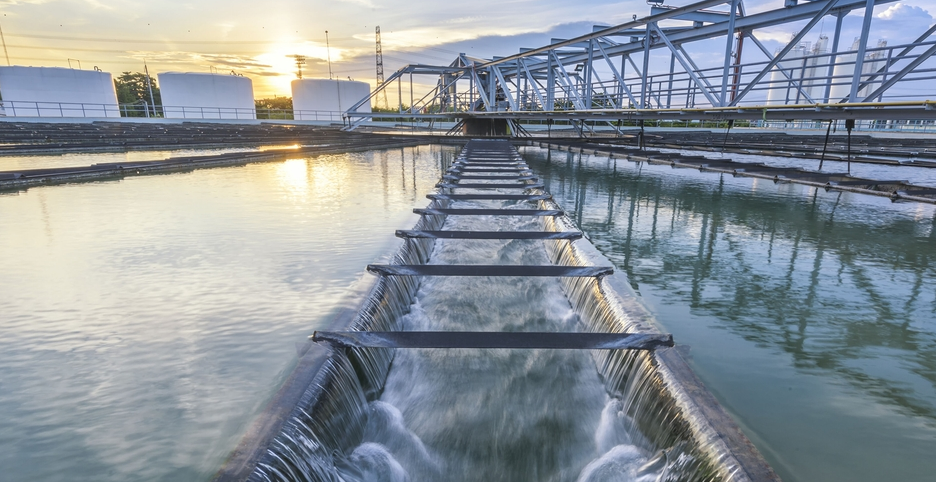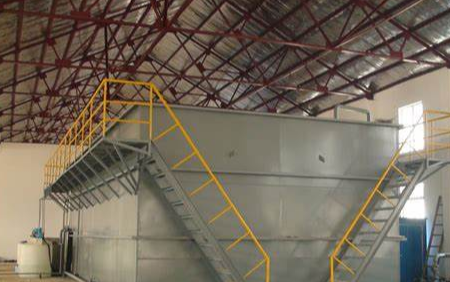What are the advanced sewage treatment technologies today?

Three-dimensional electrodes can be used to treat domestic sewage, pesticides, dyes, pharmaceuticals, phenolic wastewater and other difficult to degrade organic wastewater, metal ions, landfill leachate and so on. The organic pollutants in water irradiated by ultrasonic wave with frequency of 15~1000kHz is a physicochemical process caused by cavitation effect. Ultrasonic can not only improve the reaction conditions, speed up the reaction speed and increase the reaction yield, but also make some difficult chemical reactions to be realized. It integrates the characteristics of advanced oxidation, incineration, supercritical oxidation and other water treatment technologies in one, coupled with simple operation, low requirements for equipment, in sewage treatment, especially in the degradation of wastewater toxicity, difficult to degrade organic pollutants, accelerate the degradation rate of organic pollutants, to achieve harmless industrial wastewater pollutants, to avoid the impact of secondary pollution is of great significance. In recent years, more and more researches have been conducted on the direct or intensive treatment of organic wastewater by ultrasonic wave, including degradation mechanism, kinetics, intermediates, influencing factors and system optimization. Radiation technology Since the 1970s, with the development of large cobalt sources and electron accelerator technology, the radiation source problem in the application of radiation technology has gradually improved. The use of radiation technology to treat pollutants in wastewater has attracted the attention of many countries. Compared with traditional chemical oxidation, the use of radiation technology to treat pollutants does not need to add or only a small amount of chemical reagents, does not produce secondary pollution, has the advantages of high degradation efficiency, fast reaction speed, and thorough degradation of pollutants. Moreover, when ionizing radiation is used in combination with catalytic oxidation means such as oxygen and ozone, a "synergistic effect" will be produced. Therefore, radiation technology to deal with pollutants is a clean and sustainable technology, which is listed as the main research direction of peaceful use of atomic energy in the 21st century by the International Atomic Energy Agency. Photochemical catalytic oxidation Photochemical catalytic oxidation technology is developed on the basis of photochemical oxidation, compared with the photochemical method, has a stronger oxidation capacity, can make organic pollutants more thoroughly degraded. Photochemical catalytic oxidation is a photochemical degradation in the presence of catalysts, and the oxidant produces free radicals with strong oxidation capacity under the radiation of light. The catalysts are TiO2, ZnO, WO3, CdS, ZnS, SnO2 and Fe3O4.

Homogeneous photocatalytic degradation is based on Fe2+ or Fe3+ and H2O2 as the medium, and hydroxyl free radicals are produced by photoassisted Fenton reaction to degrade pollutants. Heterogeneous catalytic degradation is to put a certain amount of photosensitive semiconductor materials in the pollution system, such as TiO2, ZnO, and so on, combined with light radiation, so that the photosensitive semiconductor excited under light irradiation to produce electron-hole pairs, dissolved oxygen, water molecules adsorb on the semiconductor and electron-hole interaction, resulting in •OH and other strong oxidation ability of free radicals. TiO2 photocatalytic oxidation technology has obvious advantages in oxidizing and degrading organic pollutants in water, especially difficult to degrade organic pollutants. SCWO (Supercritical water oxidation) technology SCWO uses supercritical water as the medium to decompose organic matter by homogeneous oxidation. Organic pollutants can be decomposed into small inorganic molecules such as CO2 and H2O in a short time, while sulfur, phosphorus and nitrogen atoms are converted into sulfate, phosphate, nitrate and nitrite ions or nitrogen, respectively. The United States lists the SCWO process as the most promising waste treatment technology in the field of energy and environment. SCWO has fast reaction rate and short residence time. High oxidation efficiency, most organic matter treatment rate can reach more than 99%; The reactor structure is simple and the equipment size is small. Wide range of treatment, not only can be used for a variety of toxic substances, wastewater, waste treatment, can also be used to decompose organic compounds; No need for external heating, low processing cost; Good selectivity, by adjusting the temperature and pressure, can change the density of water, viscosity, diffusion coefficient and other physical and chemical characteristics, so as to change its solubility of organic matter, to achieve the purpose of selective control of reaction products. The supercritical oxidation method has been applied in the United States, Germany, Sweden, Japan and other European and American countries, but the research in China started late and is still in the laboratory research stage. Iron-carbon microelectrolysis is a good process for wastewater treatment using the reaction principle of Fe/C galvanic cells, also known as internal electrolysis, iron filings filtration, etc.
- EMERSON
- Honeywell
- CTI
- Rolls-Royce
- General Electric
- Woodward
- Yaskawa
- xYCOM
- Motorola
- Siemens
- Rockwell
- ABB
- B&R
- HIMA
- Construction site
- electricity
- Automobile market
- PLC
- DCS
- Motor drivers
- VSD
- Implications
- cement
- CO2
- CEM
- methane
- Artificial intelligence
- Titanic
- Solar energy
- Hydrogen fuel cell
- Hydrogen and fuel cells
- Hydrogen and oxygen fuel cells
- tyre
- Chemical fiber
- dynamo
- corpuscle
- Pulp and paper
- printing
- fossil
- FANUC
- Food and beverage
- Life science
- Sewage treatment
- Personal care
- electricity
- boats
- infrastructure
- Automobile industry
- metallurgy
- Nuclear power generation
- Geothermal power generation
- Water and wastewater
- Infrastructure construction
- Mine hazard
- steel
- papermaking
- Natural gas industry
- Infrastructure construction
- Power and energy
- Rubber and plastic
- Renewable energy
- pharmacy
- mining
- Plastic industry
- Schneider
- Kongsberg
- NI
- Wind energy
- International petroleum
- International new energy network
- gas
- WATLOW
- ProSoft
- SEW
- wind
- ADVANCED
- Reliance
- YOKOGAWA
- TRICONEX
- FOXBORO
- METSO
- MAN
- Advantest
- ADVANCED
- ALSTOM
- Control Wave
- AB
- AMAT
- STUDER
- KONGSBERG
- MOTOROLA
- DANAHER MOTION
- Bently
- Galil
- EATON
- MOLEX
- Triconex
- DEIF
- B&W
- ZYGO
- Aerotech
- DANFOSS
- KOLLMORGEN
- Beijer
- Endress+Hauser
- MOOG
- KB
- Moxa
- Rexroth
- YAMAHA
- Johnson
- Westinghouse
- WAGO
- TOSHIBA
- TEKTRONIX


Email:wang@kongjiangauto.com



































































































































